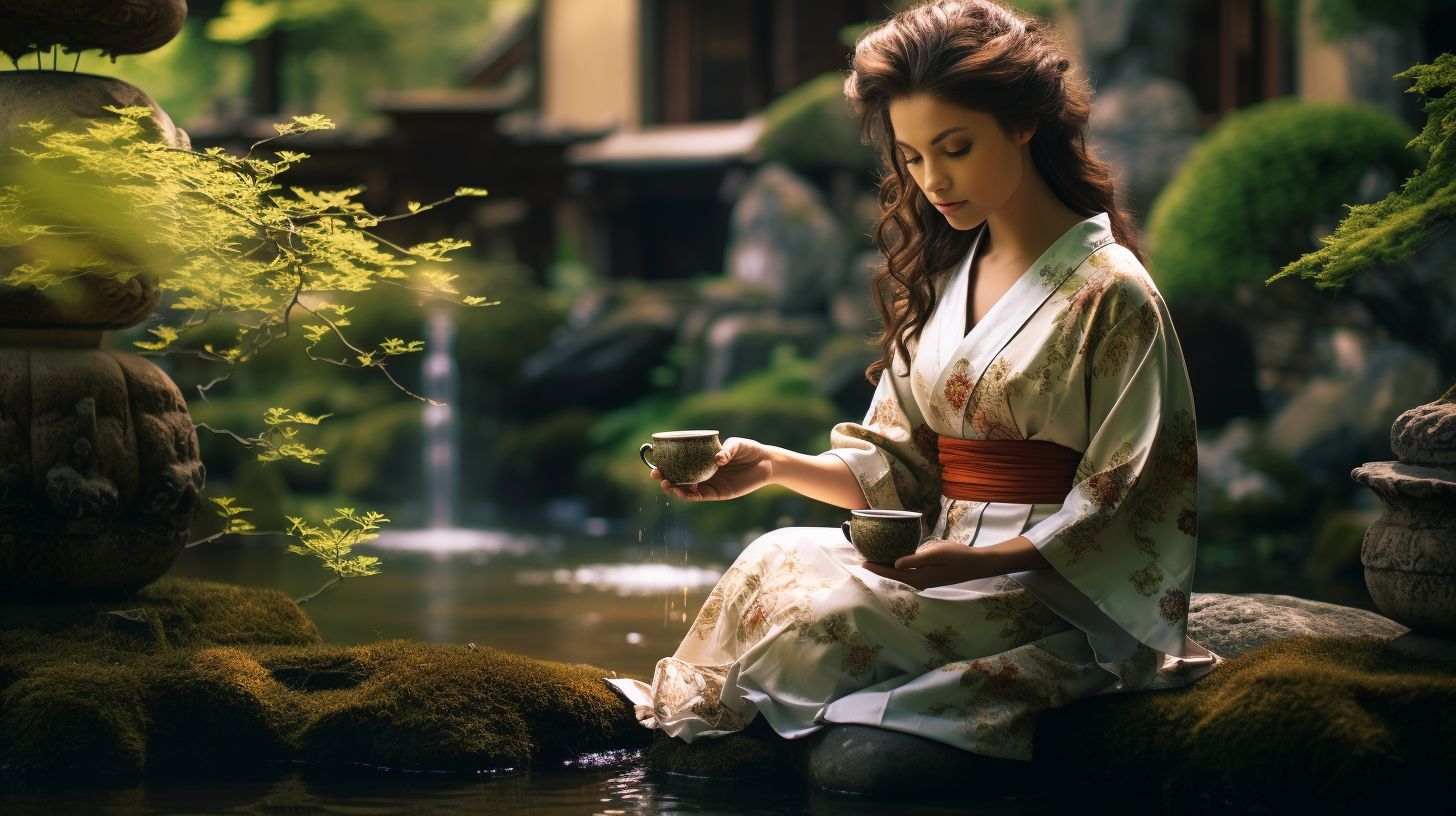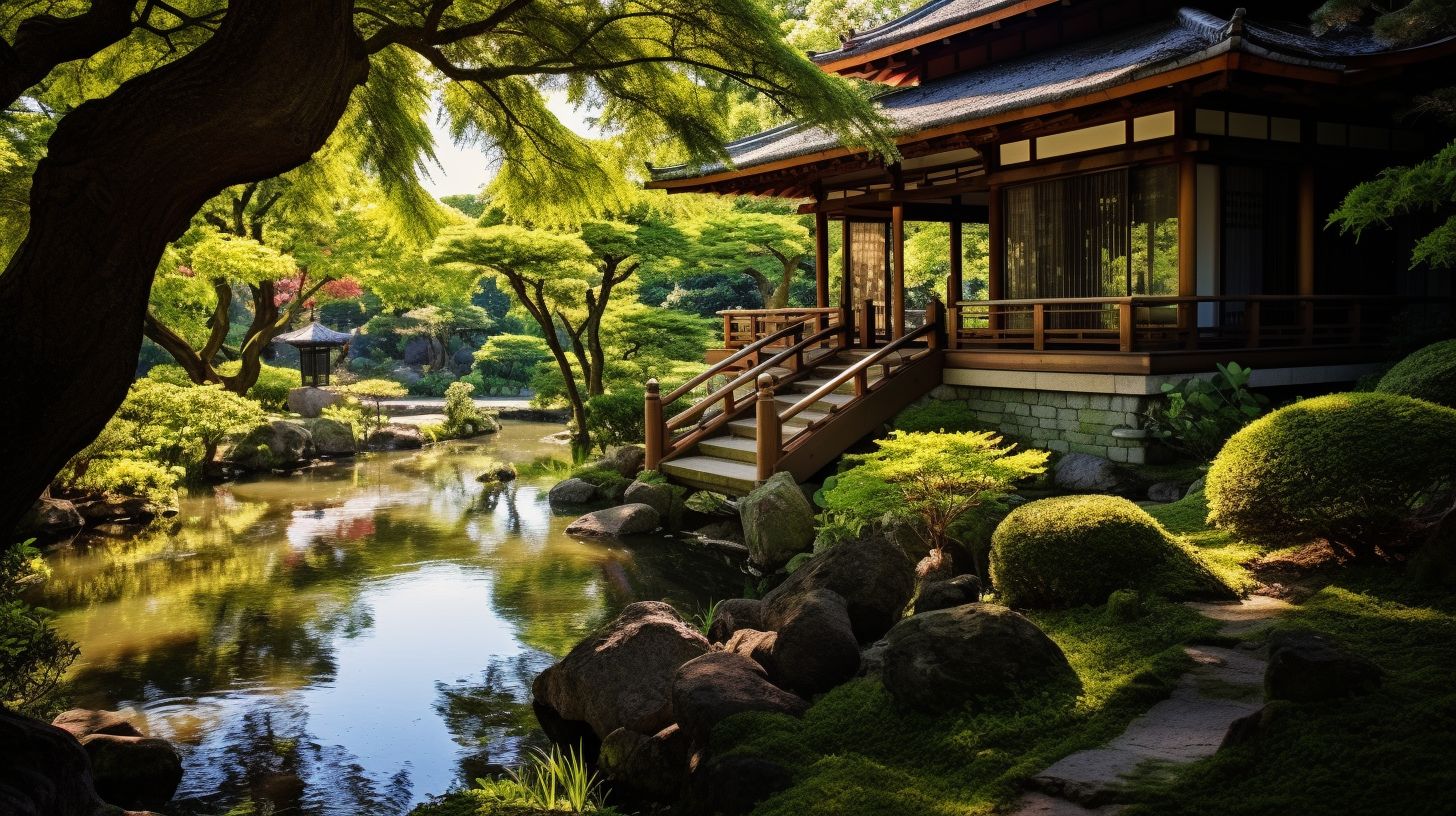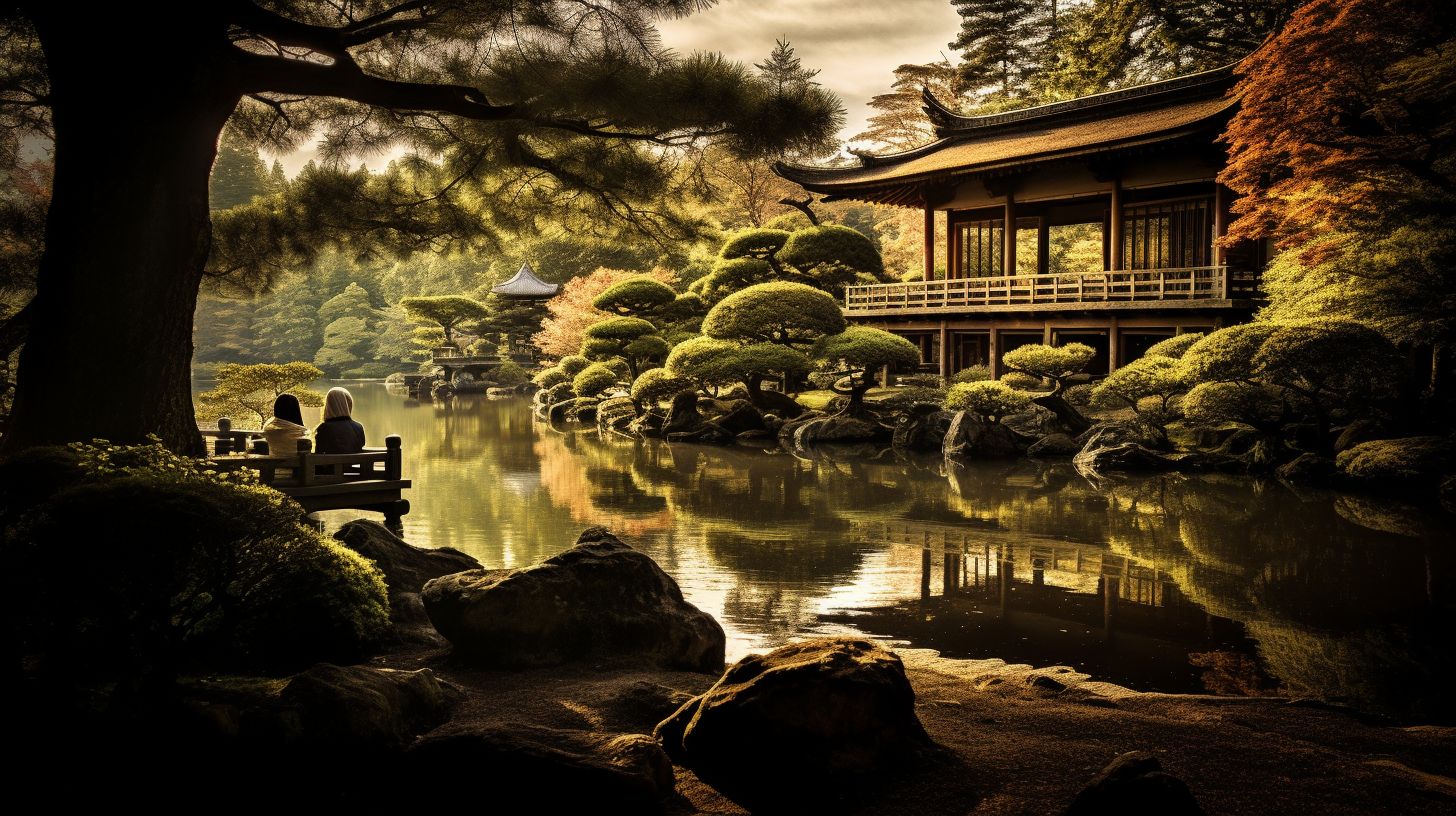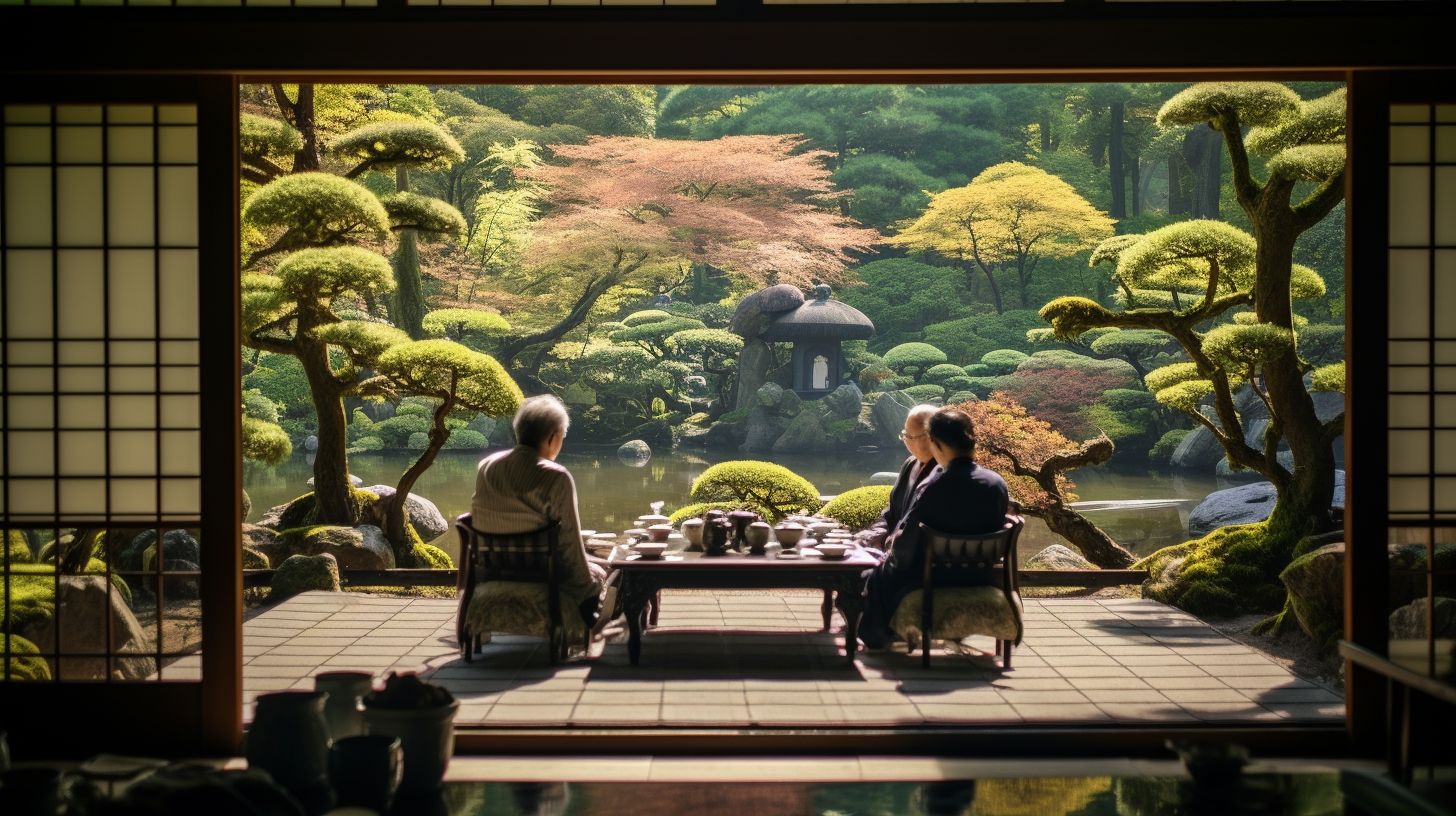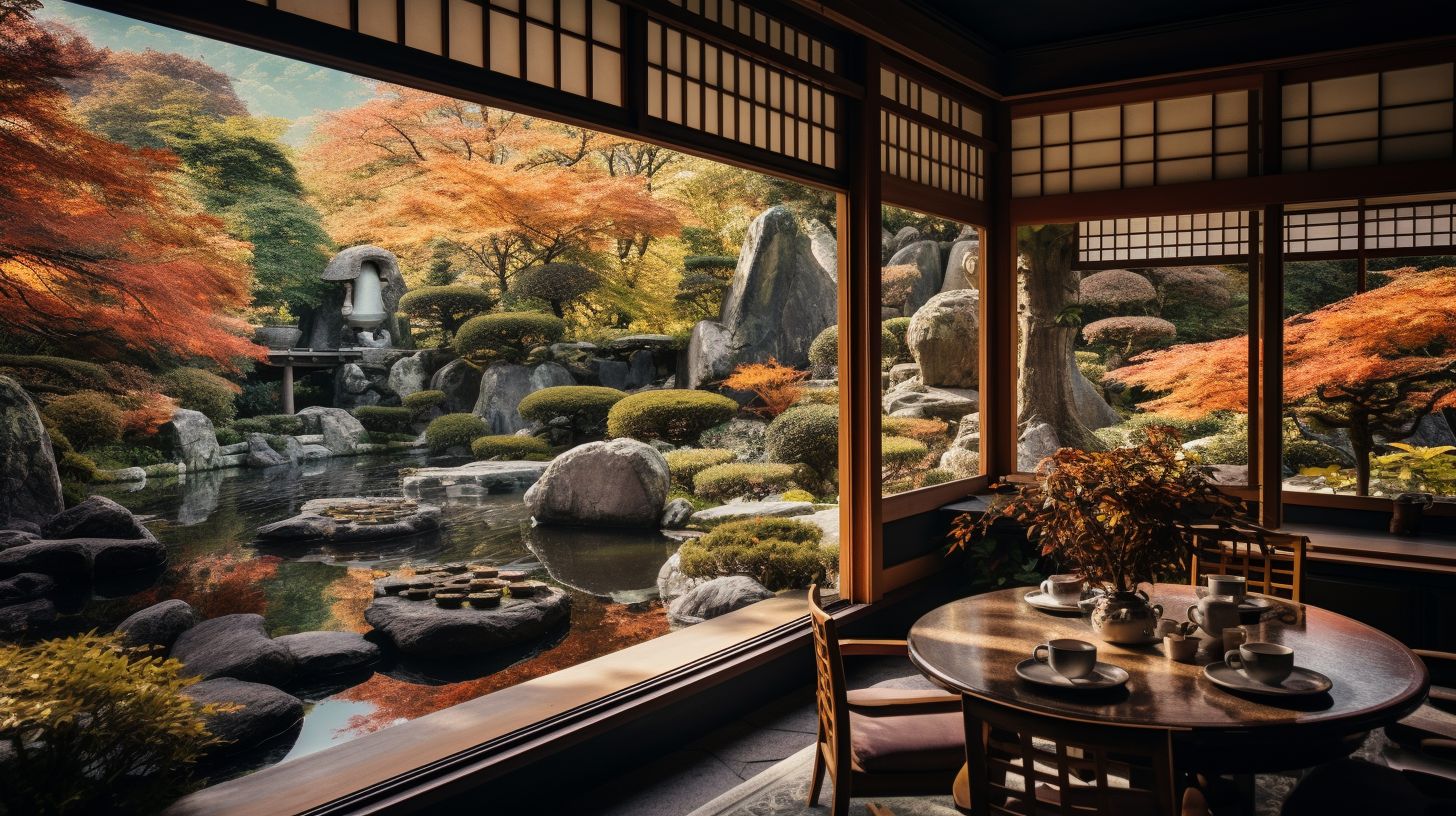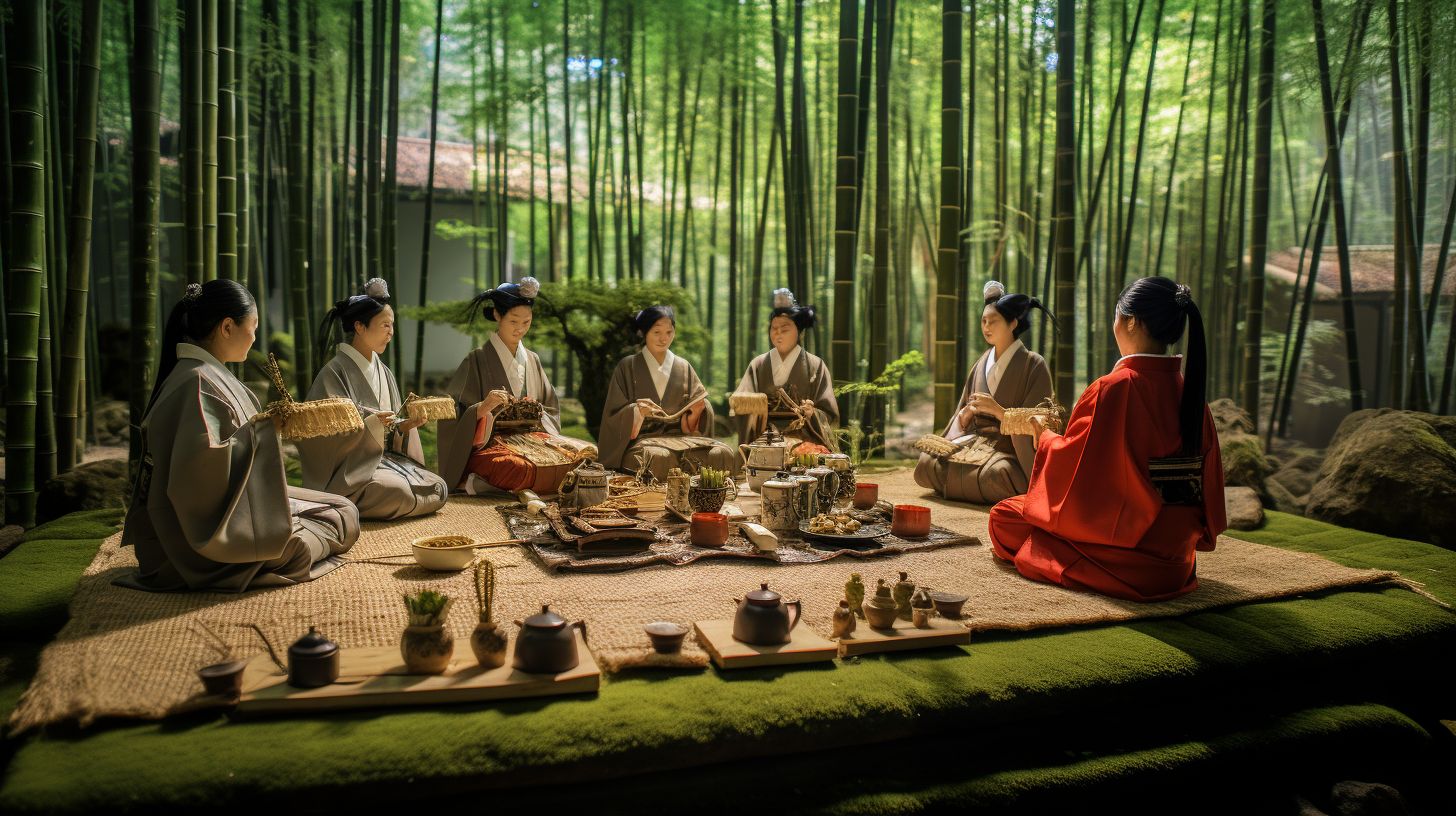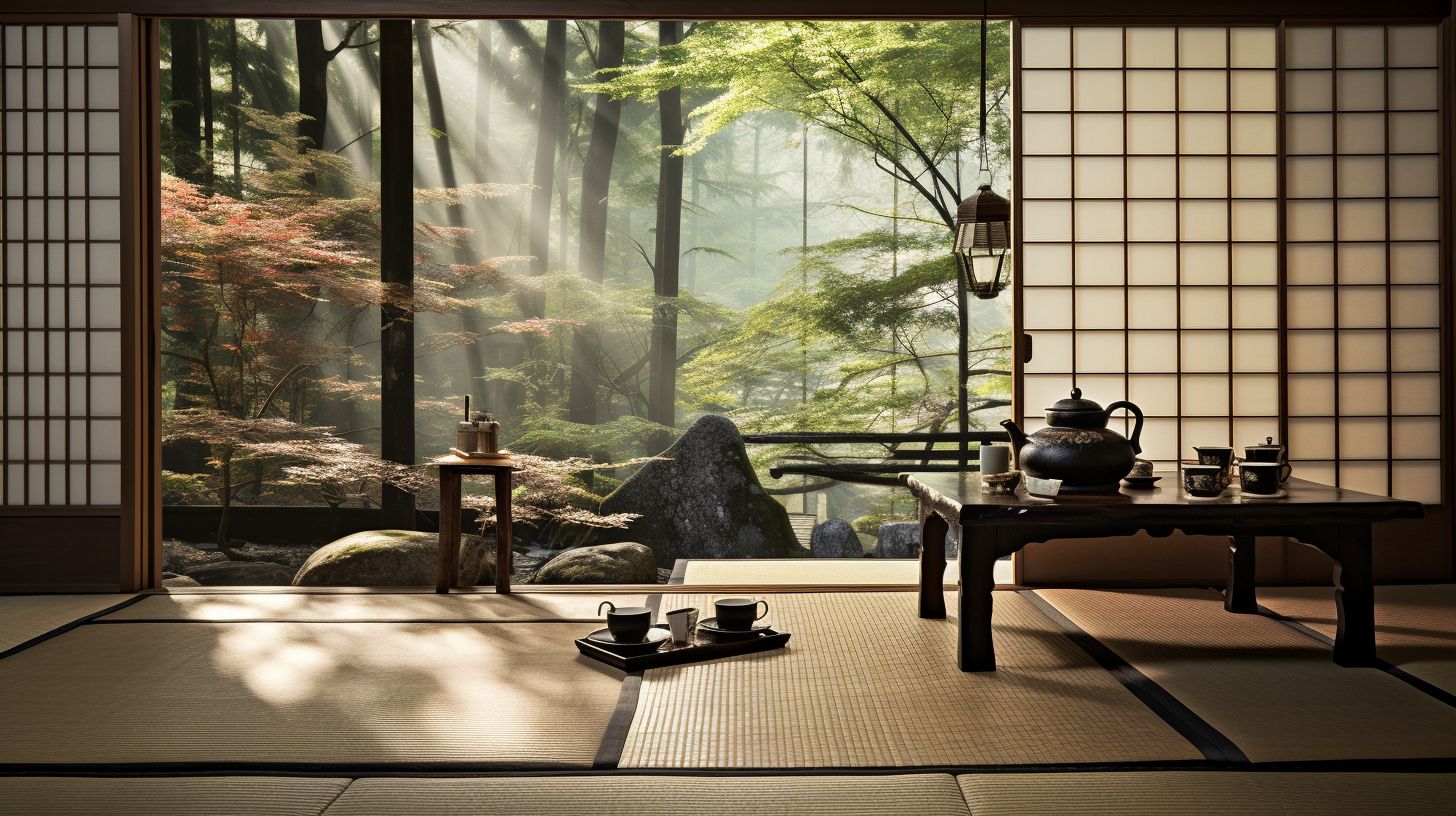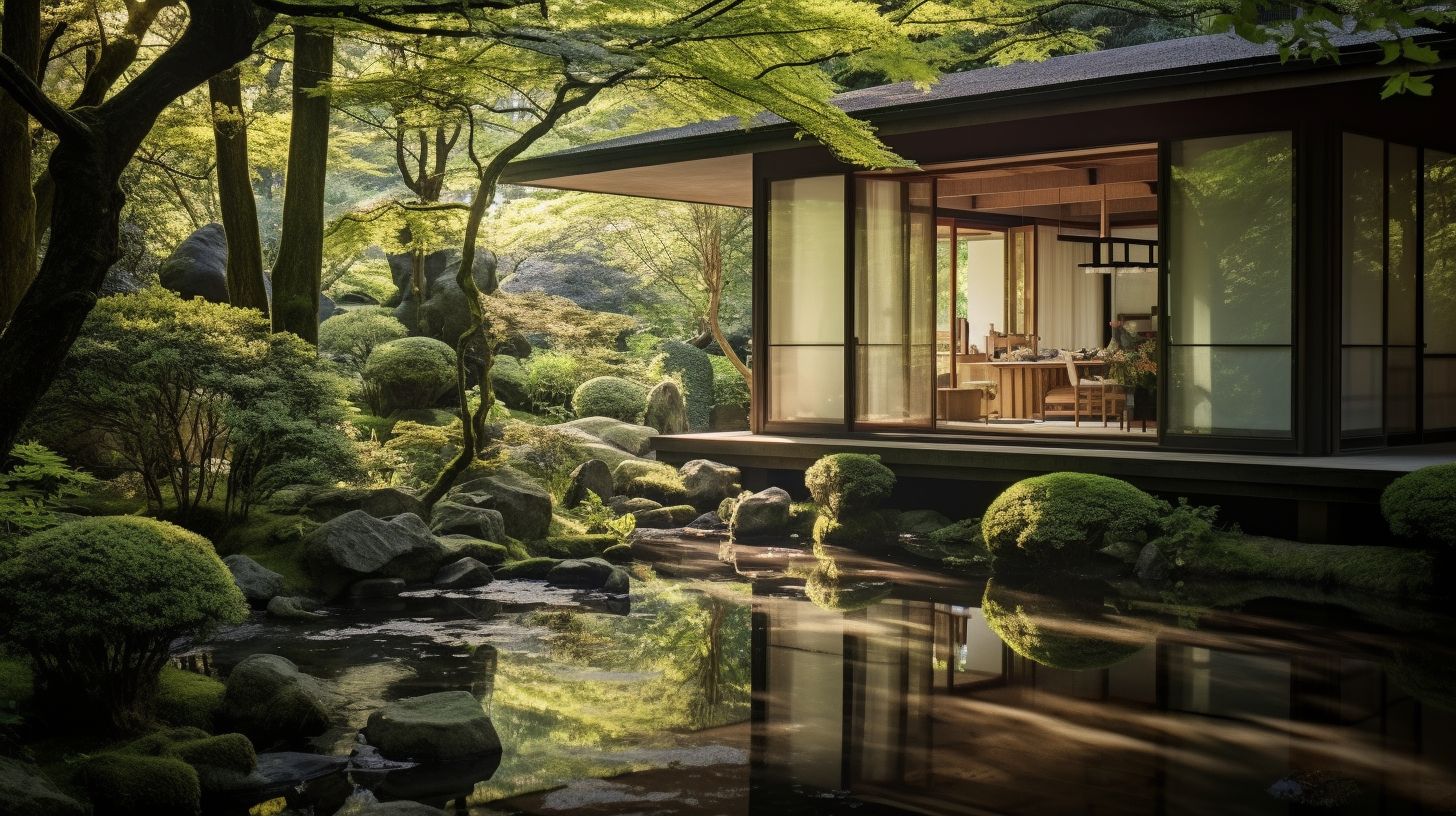
Ever found yourself entranced by the irresistible allure and underlying symbolism within a Japanese tea ceremony? I’ve often found myself lost in fascination over this intriguing ritual, which eloquently portrays ideals such as purity, reverence, and tranquility.
In our dialogue today, we’re going to delve deeper into the heartbeat of this traditional art form – its origins, rituals, and profound cultural values grounded in Zen Buddhism. So why not join me on this enriching expedition through tradition and mindfulness? Let’s unwrap these layers of culture together.
Key Takeaways
- The Japanese tea ceremony is a traditional art form that originated in China and became deeply rooted in Zen Buddhism.
- It symbolizes values such as purity, tranquility, respect, and harmony.
- The ceremonial preparation and presentation of matcha (powdered green tea) is central to the tea ceremony, involving special utensils and tools.
- The tearoom with a tatami floor creates a serene atmosphere for the ritual.
- Hospitality, harmony, respect, inner peace, and mindfulness are important values emphasized in the tea ceremony.
The Origins and Meaning of the Japanese Tea Ceremony
The Japanese Tea Ceremony originated in China but has become deeply rooted in Zen Buddhism, representing purity, tranquility, respect, and harmony.
Originating in China
The Japanese tea ceremony came from China. Long ago, monks brought tea seeds to Japan from China. These monks had learned about growing and brewing tea in China. The way we make and drink tea in Japan came from these monk’s lessons.
Rooted in Zen Buddhism
The Japanese tea ceremony is deeply rooted in Zen Buddhism. This spiritual practice originated in China and was later embraced by the Japanese, who integrated it into their own cultural traditions.
Zen Buddhism emphasizes mindfulness, tranquility, and inner peace – values that are reflected in the tea ceremony. By engaging in this ritual, participants strive to find harmony within themselves and with others.
The act of preparing and serving tea becomes a meditative experience, allowing individuals to cultivate a sense of calmness and reverence. Through the tea ceremony, one can connect with the teachings of Zen Buddhism and embrace its principles in everyday life.
Represents purity, tranquility, respect, and harmony
The Japanese tea ceremony holds deep meaning within the culture, representing purity, tranquility, respect, and harmony. It is a ritual that originated in China but has become an integral part of Japanese culture rooted in Zen Buddhism.
The practice of the tea ceremony embodies these values and is considered a spiritual journey. The sharing of tea is believed to be best when the heart is humble and pure, reflecting the ideals of tranquility and reverence.
This tradition takes place in special tea rooms or houses using unique utensils and tools to enhance the experience.
The Rituals and Components of a Japanese Tea Ceremony
The Japanese tea ceremony involves the ceremonial preparation and presentation of matcha, a powdered green tea, in a traditional tearoom with a tatami floor. Special utensils and tools are used to create an atmosphere of purity, tranquility, respect, and harmony.
Ceremonial preparation and presentation of matcha (powdered green tea)
Preparing and presenting matcha, powdered green tea, is a central part of the Japanese tea ceremony. It involves several steps and special tools:
- The tea leaves are ground into a fine powder using a stone mill.
- The powdered tea is measured and placed in a tea bowl called a chawan.
- Hot water is added to the tea bowl.
- A bamboo whisk, known as a chasen, is used to whisk the tea vigorously until it becomes frothy.
- The host offers the bowl of matcha to each guest with both hands, showing respect and hospitality.
Traditional tearoom with tatami floor
In a traditional Japanese tea ceremony, the tearoom is an important element. These tearooms are specially designed to create a serene and tranquil atmosphere for the ritual. One distinctive feature of these tearooms is the tatami floor, which is a traditional Japanese flooring made of rice straw mats covered with woven rush grass.
The tatami floor adds to the overall ambiance and helps set the tone for the tea ceremony experience. As you sit on the tatami floor, you can feel closer to nature and immerse yourself in the peaceful surroundings.
It’s an essential part of creating an authentic tea ceremony environment and contributes to the overall tranquility of this beautiful ritual.
Special utensils and tools used
In a Japanese tea ceremony, special utensils and tools are used to ensure the proper preparation and presentation of the matcha (powdered green tea). Here are some of the key items used:
- Chawan: This is a ceramic bowl in which the matcha is prepared and served. It is often handcrafted and has a simple, rustic design.
- Chasen: Also known as a bamboo whisk, this is used to froth the matcha. It consists of fine bamboo bristles that are carefully crafted into a delicate shape.
- Chashaku: A thin bamboo scoop used to measure the powdered tea. It has a curved end for scooping the matcha powder from its container.
- Mizusashi: This is a lidded water container used to hold fresh and hot water during the ceremony.
- Kensui: A waste water container where used water from rinsing the utensils is disposed of discreetly.
- Natsume: A small lacquer tea caddy that holds the powdered green tea.
The Significance and Values of the Japanese Tea Ceremony
The Japanese Tea Ceremony holds deep significance, emphasizing values of hospitality, harmony, respect, and inner peace. Discover the profound cultural traditions and spiritual experiences associated with this timeless practice.
Hospitality and respect
In the Japanese tea ceremony, hospitality and respect are key values that are deeply ingrained in the practice. When participating in a tea ceremony, it is important to show utmost respect to the host and other guests.
This includes entering the tearoom with a humble heart and following traditional customs and etiquette. Respect is also shown through gestures like bowing before receiving or passing on the teacup.
The tea ceremony emphasizes creating a welcoming atmosphere for everyone involved, where each guest is treated with kindness and consideration. It’s about fostering a sense of harmony and connection through shared experiences around tea.
Embracing harmony and tranquility
In the Japanese tea ceremony, one of the key values is embracing harmony and tranquility. The entire ritual is designed to create an atmosphere of peace and serenity. From the moment you enter the traditional tearoom with its tatami floor, you are transported into a space of calmness.
The process itself, from preparing the tea to serving it, is done with utmost care and mindfulness. This emphasis on tranquility allows participants to let go of external distractions and find inner peace.
By focusing on each step of the ceremony, one can fully immerse themselves in the present moment and experience a sense of harmony within themselves and with others.
The importance placed on harmony extends beyond just the physical space and actions involved in the tea ceremony. It represents a deeper cultural value that promotes unity and respect for others.
Through this ritual, people come together to share a moment of reverence for nature, traditions, and each other. The act of serving tea becomes an expression of hospitality and respect towards guests as well as an opportunity to build connections between individuals.
Finding inner peace and mindfulness
During a Japanese tea ceremony, finding inner peace and mindfulness is at the heart of the experience. The ritual itself encourages participants to be fully present in each moment, focusing on the preparation and enjoyment of the tea.
As you enter the serene environment of a traditional tearoom with its tatami floor, you can let go of any distractions and immerse yourself in tranquility. By practicing respect, purity, and reverence throughout the ceremony, you cultivate a sense of inner calm and harmony within yourself.
This meditative process allows you to connect with your senses, appreciate simplicity, and find a profound sense of inner peace.
Conclusion
In conclusion, the Japanese tea ceremony is a deeply meaningful ritual that represents purity, tranquility, respect, and harmony. It originated in China but has become an integral part of Japanese culture rooted in Zen Buddhism.
Through its rituals and customs, the tea ceremony embodies values such as hospitality, inner peace, and mindfulness. By participating in this ceremony, one can embrace these values and experience a sense of harmony and reverence.
FAQs
1. What is a Japanese Tea Ceremony?
A Japanese tea ceremony is a traditional ritual where green tea is made and served. It shows the art of hospitality and carries deep cultural significance.
2. Why are rituals important in a Japanese tea ceremony?
Rituals in a Japanese tea ceremony show harmony and balance. They honor traditional customs of purity, tranquility, and reverence.
3. How does the Tea ceremony express Japanese values?
The practice of the green tea ritual shows many core Japanese values such as purity, cleanliness, reverence, wabi (a form of calm) and inner spiritual experiences.
4. Can you tell me about the steps involved in a Tea ceremony?
Traditional tea preparation involves several careful steps with special utensils to prepare and serve the green tea while promoting an inner experience of peace.
5. Is there more meaning to this than just making tea?
Yes! The Japanese Tea Ceremony embraces key parts of their culture like respect for others by showing good manners during customs plus it’s also an art display in itself.
